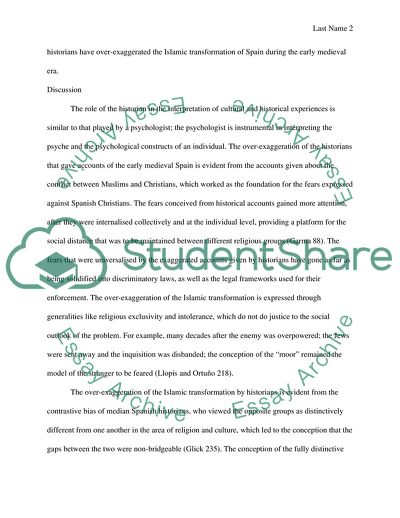Cite this document
(The Over-Exaggeration of the Islamic Transformation of Early Medieval Spain by Historians Essay Example | Topics and Well Written Essays - 1500 words, n.d.)
The Over-Exaggeration of the Islamic Transformation of Early Medieval Spain by Historians Essay Example | Topics and Well Written Essays - 1500 words. https://studentshare.org/history/1813141-have-historians-over-exaggerated-the-islamic-transformation-of-early-medieval-spain
The Over-Exaggeration of the Islamic Transformation of Early Medieval Spain by Historians Essay Example | Topics and Well Written Essays - 1500 words. https://studentshare.org/history/1813141-have-historians-over-exaggerated-the-islamic-transformation-of-early-medieval-spain
(The Over-Exaggeration of the Islamic Transformation of Early Medieval Spain by Historians Essay Example | Topics and Well Written Essays - 1500 Words)
The Over-Exaggeration of the Islamic Transformation of Early Medieval Spain by Historians Essay Example | Topics and Well Written Essays - 1500 Words. https://studentshare.org/history/1813141-have-historians-over-exaggerated-the-islamic-transformation-of-early-medieval-spain.
The Over-Exaggeration of the Islamic Transformation of Early Medieval Spain by Historians Essay Example | Topics and Well Written Essays - 1500 Words. https://studentshare.org/history/1813141-have-historians-over-exaggerated-the-islamic-transformation-of-early-medieval-spain.
“The Over-Exaggeration of the Islamic Transformation of Early Medieval Spain by Historians Essay Example | Topics and Well Written Essays - 1500 Words”. https://studentshare.org/history/1813141-have-historians-over-exaggerated-the-islamic-transformation-of-early-medieval-spain.


